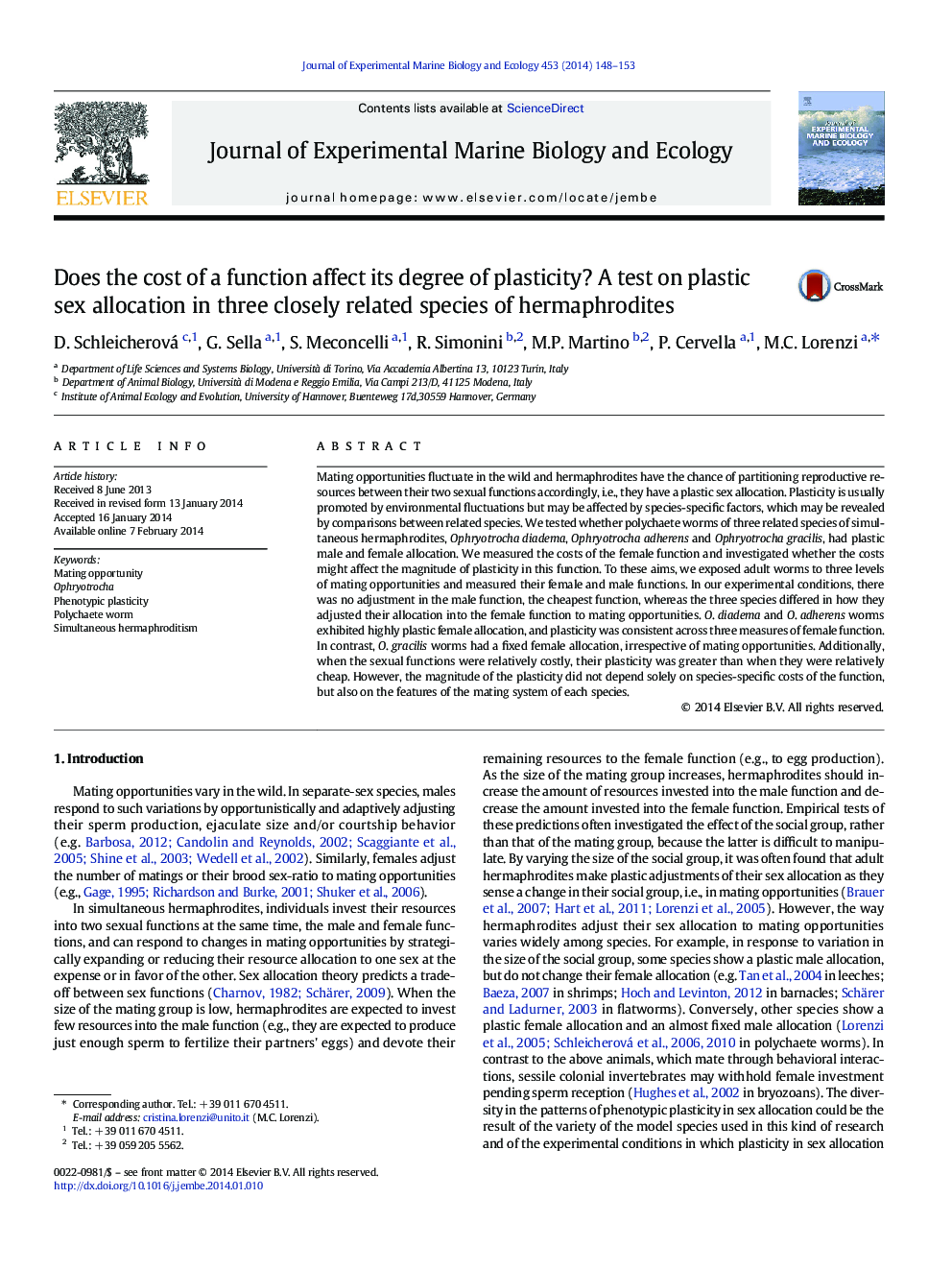| Article ID | Journal | Published Year | Pages | File Type |
|---|---|---|---|---|
| 4395586 | Journal of Experimental Marine Biology and Ecology | 2014 | 6 Pages |
•We tested for plasticity in sex allocation in simultaneous hermaphrodites.•We compared this plasticity in three species of polychaete worms.•Worms had invariantly low sperm counts irrespective of mating opportunities.•Worms decreased allocation into female function as mating opportunities increased.•Female-function costs and mating system affected the magnitude of plasticity.
Mating opportunities fluctuate in the wild and hermaphrodites have the chance of partitioning reproductive resources between their two sexual functions accordingly, i.e., they have a plastic sex allocation. Plasticity is usually promoted by environmental fluctuations but may be affected by species-specific factors, which may be revealed by comparisons between related species. We tested whether polychaete worms of three related species of simultaneous hermaphrodites, Ophryotrocha diadema, Ophryotrocha adherens and Ophryotrocha gracilis, had plastic male and female allocation. We measured the costs of the female function and investigated whether the costs might affect the magnitude of plasticity in this function. To these aims, we exposed adult worms to three levels of mating opportunities and measured their female and male functions. In our experimental conditions, there was no adjustment in the male function, the cheapest function, whereas the three species differed in how they adjusted their allocation into the female function to mating opportunities. O. diadema and O. adherens worms exhibited highly plastic female allocation, and plasticity was consistent across three measures of female function. In contrast, O. gracilis worms had a fixed female allocation, irrespective of mating opportunities. Additionally, when the sexual functions were relatively costly, their plasticity was greater than when they were relatively cheap. However, the magnitude of the plasticity did not depend solely on species-specific costs of the function, but also on the features of the mating system of each species.
